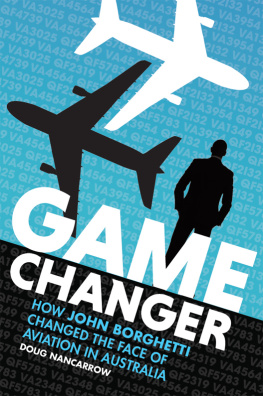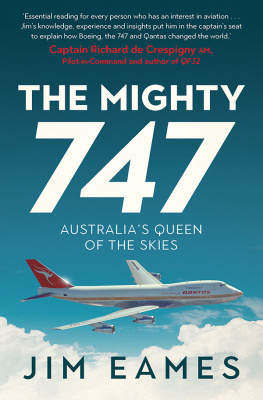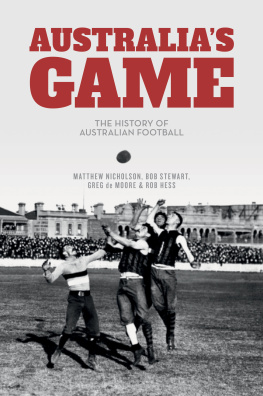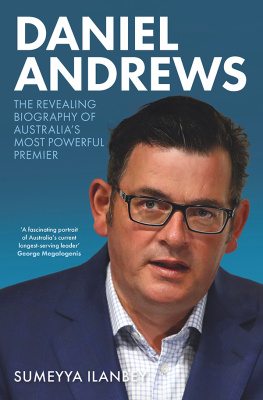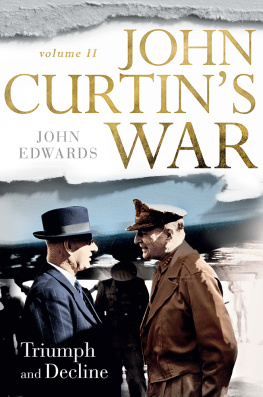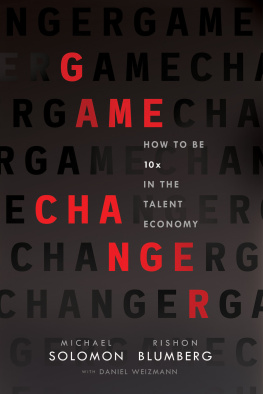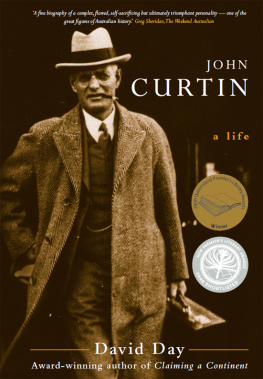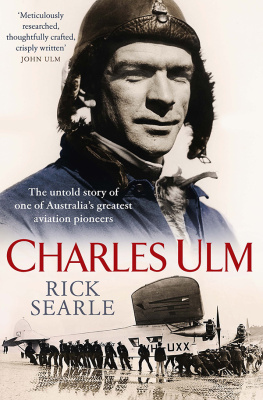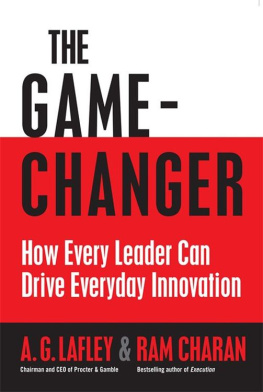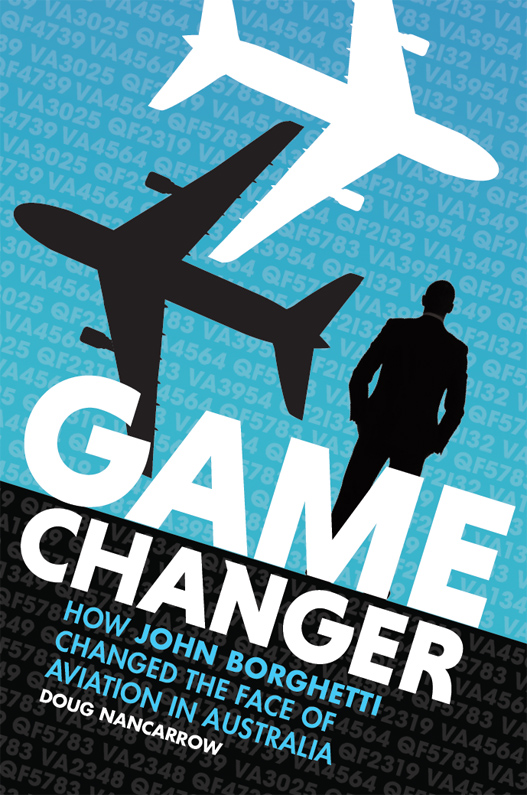CONTENTS
Guide
DOUG NANCARROW is a journalist specialising in aviation. He is currently the editor of Aviation Business magazine. He is also executive chairman of Safeskies Australia, a not-for-profit organisation that actively promotes safety in our airline industry. He holds a commercial pilots licence and has been an owner/manager of a flying training organisation and an aviation theory instructor. Before specialising in aviation he was a journalist with News Limited. He was Australias Aviation Journalist of the Year in 2006 and runner up for that award in 2009. In 2013, he won an award for Aviation News Story of the Year.
W hen youve spent the best part of four decades in the employ of one company and done a pretty good job by all accounts you might expect a memorable send-off when the day comes to move on.
For John Borghetti, with thirty-six years at Qantas under his belt, and having reached the pinnacle of Executive General Manager, with responsibility for running the airline itself, his departure was not so memorable.
Having joined the company as a junior mailroom boy at the age of seventeen, he had risen to such an elevated position that only the Chief Executive Officer, Geoff Dixon, and the Chief Financial Officer, Peter Gregg, were more senior to him. The CEOs chair had seemed like the inevitable next step in what had been an exceptional and hard-won climb up the corporate ladder. But when Geoff Dixons successor was named in 2008, Borghetti was overlooked in favour of an ambitious young executive from Ireland, Alan Joyce. Borghetti had not been confident of his chances but nevertheless was disappointed. A few months later, of his own volition, he walked away from the only company he had ever known.
He gave himself six months to consider his future. He was determined not to rush into anything he might regret. He had money, having walked away with A$4.9 million in salary and entitlements, and, although he was almost fifty-five, he had time. After so long with the Flying Kangaroo, he was tempted to take his life in another direction altogether but it would have to be something that appealed strongly.
He knew only the airline business, having never worked outside Qantas in a career that had exposed him to almost every facet of the industry, from sorting mail to selling tickets to ordering new aircraft. But the airline business in Australia in 2009 was pretty much Qantas. The only real alternative was Virgin Blue, an airline that had introduced a new business model to the Australian scene, offering cheap and basic travel in a market that for decades had been accustomed only to full service offerings.
But a career at Virgin Blue had little appeal for Borghetti, whose strength was in customer service, not the service-thin model the budget airlines offered. And anyway, the man behind the Virgin brand, Sir Richard Branson, had no time for someone who had spent thirty-six years with the enemy. Qantas was an ally of the hated British Airways, which had done everything possible to bring down Bransons beloved Virgin Atlantic.
John Borghetti would spend the best part of a year looking at the opportunities, but in the end would return to the industry he knew so well and loved. And that return would have dramatic repercussions for the Australian aviation scene.
S eventeen-year-old Massimo Borghetti was working in his parents restaurant in the Melbourne CBD, as he often did after school and at weekends, the night his fathers good friend Mario Borg popped in for what would be a fateful moment in the young mans life.
Borg, who was an executive at Qantas Airways, was a regular visitor to the familys restaurant, but on this mild Melbourne evening early in 1973 he had something special in mind. He knew that his friends elder son was a hard worker with a gift for keeping the customers happy.
Borg also knew that the young man was bursting to enter the workforce, to establish himself in a job in his own right and to make his mark on the world. Massimos father also a Mario had quietly urged his best friend Borg to keep an eye out for a job at Qantas for his son. The restaurateur wanted to see his son in a good, secure job and in the 1970s there was nothing more secure than a role with the government-owned Qantas.
On this particular night, Borg had come straight from his office just a couple of blocks from the restaurant to find the young man. He had heard that very morning that there was a junior job going at the airline, and he thought Massimo might be interested in applying for it.
The young mans eyes lit up as he listened to the proposal. Did he want the job? Oh yes he did, even if it was the lowest of the low. He didnt care: he wanted any job that would release him from a high school he hated. He would have cleaned their toilets, polished their boots, if only they would pay him for it and give him an opportunity prove himself.

Ten years had passed since Massimo Borghetti, seven years old, had arrived in Australia with his mother and two younger siblings on 25 April 1962.
They had landed at Essendon Airport, then Melbournes main airport, after an epic 35-hour journey from Rome to Sydney on a Qantas Boeing 707 and then to Melbourne on a TAA Lockheed Electra. In those days, Melbourne had no international airport. Qantas was the countrys only international airline.
The Borghetti kids, Massimo, Mauro and baby Rita, and their mother, Anna, had flown around the world to join Mario, who had preceded them by three months. He had arrived in Melbourne alone on 19 January, the vanguard of a search for a better life. Massimos first thoughts as he alighted from the aeroplane that day were of kangaroos. He had heard they were large, aggressive and everywhere in this strange land. And his alarm on stepping down from the plane at Essendon Airport was ignited by the intense, still heat of a Melbourne summer and the emptiness of the horizon.
It was infinitely different from the bustling Italian capital he had left behind. Even outside Rome, the Italian countryside wasnt brown, dead, empty; there were rolling hills, trees everywhere and people. He was thrilled to see his father waiting in the distance, but why were they all here in this desolate place? Why were his parents doing this to their children? There was nothing in sight. Nobody. Nothing.
He could sense that his mother was also disconcerted by the barren vista but was doing all she could to hide it, mustering a radiant smile for her husband as he waited impatiently at the very front of the small crowd of greeters in the tiny terminal.
In Massimos imagination, the kangaroos he had been told about had grown into fiercely malevolent beasts, three metres tall. He looked for them as he accompanied his mother across the baking tarmac, but they were nowhere to be seen in the empty vastness.
He had not the slightest idea then that the kangaroo, or at least a symbolic version of it, would become such a huge part of his life in this strange and forbidding landscape.
But the Qantas of those days was only just emerging as the flying kangaroo. The airline connected Australia, which still felt a very long way from civilisation, to the rest of the world a world that was centred on the mother country, the United Kingdom, and particularly London.
Qantas had just entered the age of the jet airliner, with the arrival of its first Boeing 707 in July 1959. These jets were to change everything for Qantas and its passengers, bringing the world suddenly closer and making air travel far more accessible. Prior to the 707s, Qantas had flown the four-engined, propeller-driven Super Constellation on very long trips to Europe and North America, running thrice-weekly round-the-world services. But, despite the romance of Super Connie travel, they were slow and the cost of operating them kept airfares high. Only the well-off could afford to fly; Australias budget travellers still made those long journeys by boat.

